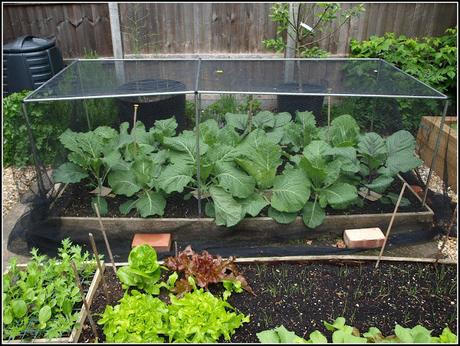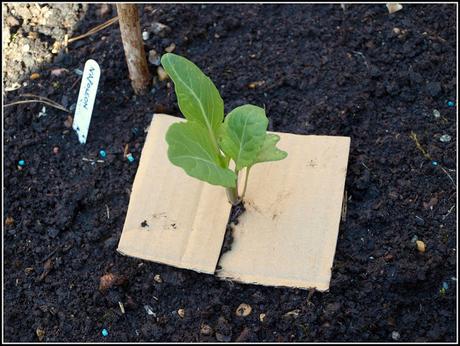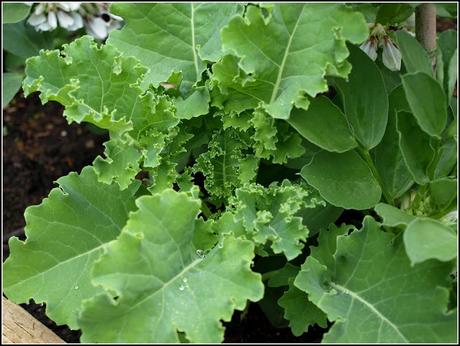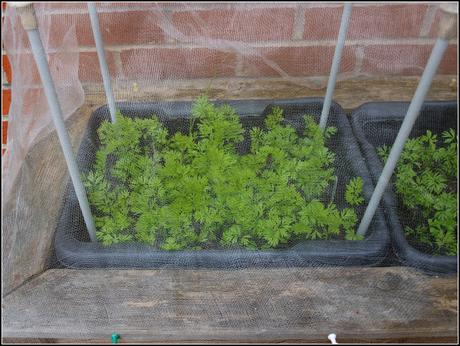
No-one could be more surprised about this than me. I have come to expect a certain amount of damage; it's normal. I haven't used any different slug-control tactics this year. As usual, I have protected my plants with the blue slug-pellets. They are usually fairly effective, but seldom 100% so.
I have not lost any brassica seedlings to the Cabbage Root Fly this year either. Normally I lose about 20% of my seedlings and have to replace them with spares raised specifically for this reason, but not this year. Last week I applied the nematodes that I normally use to reduce the incidence of Cabbage Root Fly. I had been thinking I had left it a bit late, but as it happens the nematodes were probably unnecessary. Why? Were my home-made brassica-collars super effective? I doubt it.

Even the Kale plants, which have had no protection at all are (at this minute) still in near-perfect condition!

Could it be that my brassicas have been stronger, quicker-growing and more pest-resistant than previously? It's possible. To the soil in which they are growing I added four different types of nutrient-booster: home-made garden compost; "Growmore" general-purpose fertiliser; pelleted chicken manure; and Seer Rockdust. To be fair, I always use 3 of those 4. The new one is the rockdust. I'm always a bit sceptical about the claims of vendors of products like this, but on this occasion I'm inclined to say that I think it has made a difference. Just look at the size of these cabbages:

Considering the fact that they are really still little more than seedlings, and have not even begun to heart-up, they are enormous. I planted 12 cabbages in 2 rows of 4, but I'm beginning to think it was too many! This closer view also allows you to see that the leaves are still pristine, with not a hole to be seen.
Is this too good to last? Is there some other dreadful problem that will take down my cabbages waiting for the opportunity to strike? Who knows. Gardening is always to a certain extent a gamble, and a crop is never successful until it's on the kitchen worktop! I live in hope.
Today I also want to show you how my finger carrots are getting on. "Finger carrots" are ones that are harvested small (finger-sized!) rather than grown for bulk. I grow some each year in a raised wooden container outside our kitchen window. As you will see here, the carrots are in black plastic crates, protected by Enviromesh from the dreaded Carrot Root Fly:

The crate on the right is a bit behind the one on the left, because its first batch of seeds failed to germinate (it was an old pack). The carrots in the left-hand crate look pretty good though.

I deliberately sow these carrots very thickly and don't thin them out, because they don't need much room to develop and they will be very slim even when mature. You'll have noticed that I have not taken the mesh off for the photographs. I'm not taking any chances, you know. The fewer opportunities the flies have of sneaking in, the better! Nets are the key to vegetable-raising success in my part of the world, that's for sure.
